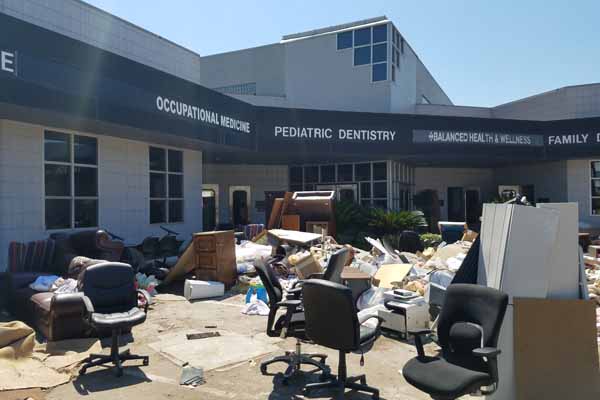
When Hurricane Harvey blew ashore along the Texas coast in August 2017, the Texas Department of State Health Services (DSHS) was on the front line responding to the storm.
So how did the state's health agency acquit itself?
The DSHS "after-action report" released last week spells out the department's successes and shortcomings.
Not surprisingly, the department called its overall efforts "overwhelmingly successful." The report says physicians who helped coordinate medical efforts during Hurricane Harvey agreed at the time that the coordination of medical care at the federal, state, and local level had improved since previous hurricanes, especially Hurricane Katrina in 2005.
Houston's hospitals, shelters, and other medical facilities were much better prepared, says Harris County Medical Society Past President Lisa Ehrlich, MD, who was co-director of medical operations at Houston's NRG Stadium shelter during Harvey.
"The hospitals had an uptick in volume, obviously, but they weren't overwhelmed like we saw in Katrina," Dr. Ehrlich told Texas Medicine Today shortly after Hurricane Harvey.
The DSHS after-action report balances the department’s strengths with "areas of improvements" in nearly 16 categories, including operations, vector control, and behavioral health services.
Under operations, for instance, the report found that communications with medical incident support teams and other responders was much improved. On the other hand, flooding and reduced transportation options meant many dialysis patients were unable to reach their usual location for treatment or any alternatives. The report recommends stressing pre-disaster evacuation for these patients and identifying transportation options for those who stay behind.
Other problems remained. For instance, many generators that were supposed tokeep power on had not been kept in a "deployable" condition, and many ambulances did not have proper IV pumps.
Under behavioral health, the DSHS after-action report says morale remained high at the State Medical Operations Center (SMOC), the state's public health and medical coordinating point. However, SMOC also had no one monitoring the staff's well-being. Many staff members eventually showed signs of stress, including tension, fatigue, lack of focus, irritability, short tempers, and anxiety, the report says.
Out in the field, the report found a lack of behavioral health services at many important locations, such as embarkation hubs, staging areas, reception centers, and shelters.
"The sheer scale and scope of the Hurricane Harvey response created chokepoints in the evacuation, transportation, and sheltering system, thus magnifying the need for [behavioral health] services," the report concludes. "[That] support should be provided throughout the evacuation process to manage potential behavioral health issues."
Texas Medicine also looked at the public health effects and the lessons learned a year later in its August edition.